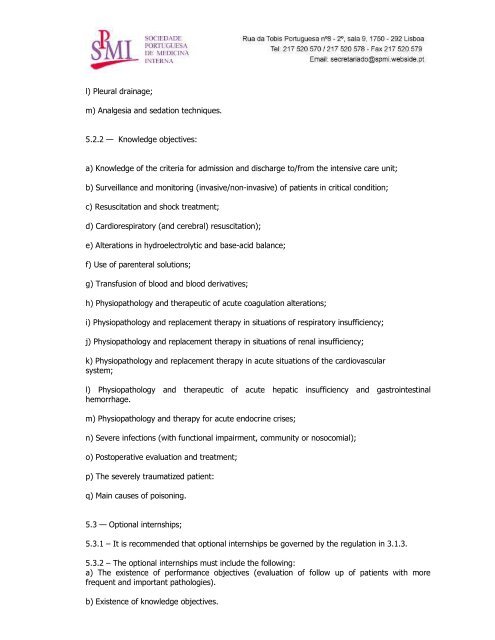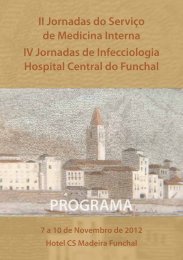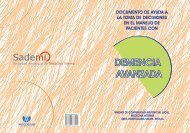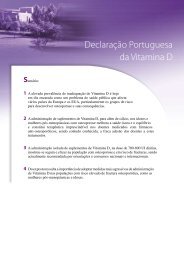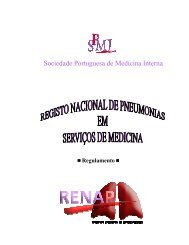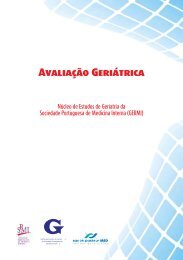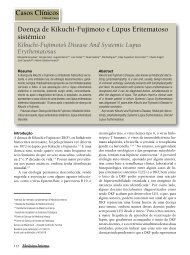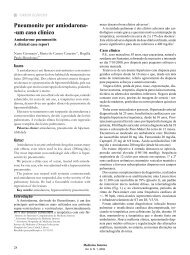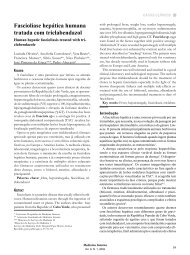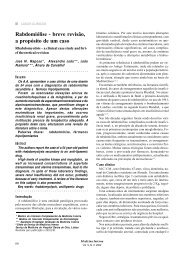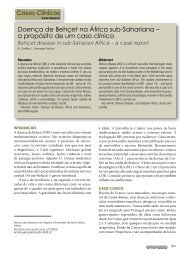Training Program of the Complementary Internship in Internal ...
Training Program of the Complementary Internship in Internal ...
Training Program of the Complementary Internship in Internal ...
You also want an ePaper? Increase the reach of your titles
YUMPU automatically turns print PDFs into web optimized ePapers that Google loves.
l) Pleural dra<strong>in</strong>age;<br />
m) Analgesia and sedation techniques.<br />
5.2.2 — Knowledge objectives:<br />
a) Knowledge <strong>of</strong> <strong>the</strong> criteria for admission and discharge to/from <strong>the</strong> <strong>in</strong>tensive care unit;<br />
b) Surveillance and monitor<strong>in</strong>g (<strong>in</strong>vasive/non-<strong>in</strong>vasive) <strong>of</strong> patients <strong>in</strong> critical condition;<br />
c) Resuscitation and shock treatment;<br />
d) Cardiorespiratory (and cerebral) resuscitation);<br />
e) Alterations <strong>in</strong> hydroelectrolytic and base-acid balance;<br />
f) Use <strong>of</strong> parenteral solutions;<br />
g) Transfusion <strong>of</strong> blood and blood derivatives;<br />
h) Physiopathology and <strong>the</strong>rapeutic <strong>of</strong> acute coagulation alterations;<br />
i) Physiopathology and replacement <strong>the</strong>rapy <strong>in</strong> situations <strong>of</strong> respiratory <strong>in</strong>sufficiency;<br />
j) Physiopathology and replacement <strong>the</strong>rapy <strong>in</strong> situations <strong>of</strong> renal <strong>in</strong>sufficiency;<br />
k) Physiopathology and replacement <strong>the</strong>rapy <strong>in</strong> acute situations <strong>of</strong> <strong>the</strong> cardiovascular<br />
system;<br />
l) Physiopathology and <strong>the</strong>rapeutic <strong>of</strong> acute hepatic <strong>in</strong>sufficiency and gastro<strong>in</strong>test<strong>in</strong>al<br />
hemorrhage.<br />
m) Physiopathology and <strong>the</strong>rapy for acute endocr<strong>in</strong>e crises;<br />
n) Severe <strong>in</strong>fections (with functional impairment, community or nosocomial);<br />
o) Postoperative evaluation and treatment;<br />
p) The severely traumatized patient:<br />
q) Ma<strong>in</strong> causes <strong>of</strong> poison<strong>in</strong>g.<br />
5.3 — Optional <strong>in</strong>ternships;<br />
5.3.1 – It is recommended that optional <strong>in</strong>ternships be governed by <strong>the</strong> regulation <strong>in</strong> 3.1.3.<br />
5.3.2 – The optional <strong>in</strong>ternships must <strong>in</strong>clude <strong>the</strong> follow<strong>in</strong>g:<br />
a) The existence <strong>of</strong> performance objectives (evaluation <strong>of</strong> follow up <strong>of</strong> patients with more<br />
frequent and important pathologies).<br />
b) Existence <strong>of</strong> knowledge objectives.


